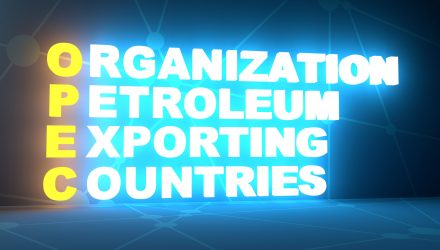The United States Oil Fund (NYSEArca: USO), which tracks West Texas Intermediate crude oil futures, and the United States Brent Oil Fund (NYSEArca: BNO), which tracks Brent crude oil futures, jumped an average of 7% last month.
Not surprisingly, the Organization of Petroleum Exporting Countries (OPEC) played a pivotal role in oil’s April surge.
Current OPEC compliance with production cut plans remains above their historical average, and it usually takes between two to three quarters for inventories to normalize after the cuts. While demand has yet to catch up to elevated supplies, rebounding economies in Europe and steady economic growth in the U.S. could prompt more upside for oil this year.
“Compliance with the OPEC/non-OPEC deal hit yet another record high because of a 70,000-bpd dip in April, putting collective production levels at 32.12 million barrels per day (mb/d),” reports OilPrice.com. “The losses are largely the result of ongoing declines in Venezuela, plus deteriorating production from aging oil fields in Angola. The strong cohesion among OPEC’s other members helped push the group’s compliance rate in April jumped to 162 percent, according to a Reuters survey, up slightly from March.”
Inside The OPEC Catalyst
OPEC’s ability to be unified in its output reduction efforts is crucial at a time when Russia, the world’s largest producer; and the U.S. are pumping oil at near record levels.
